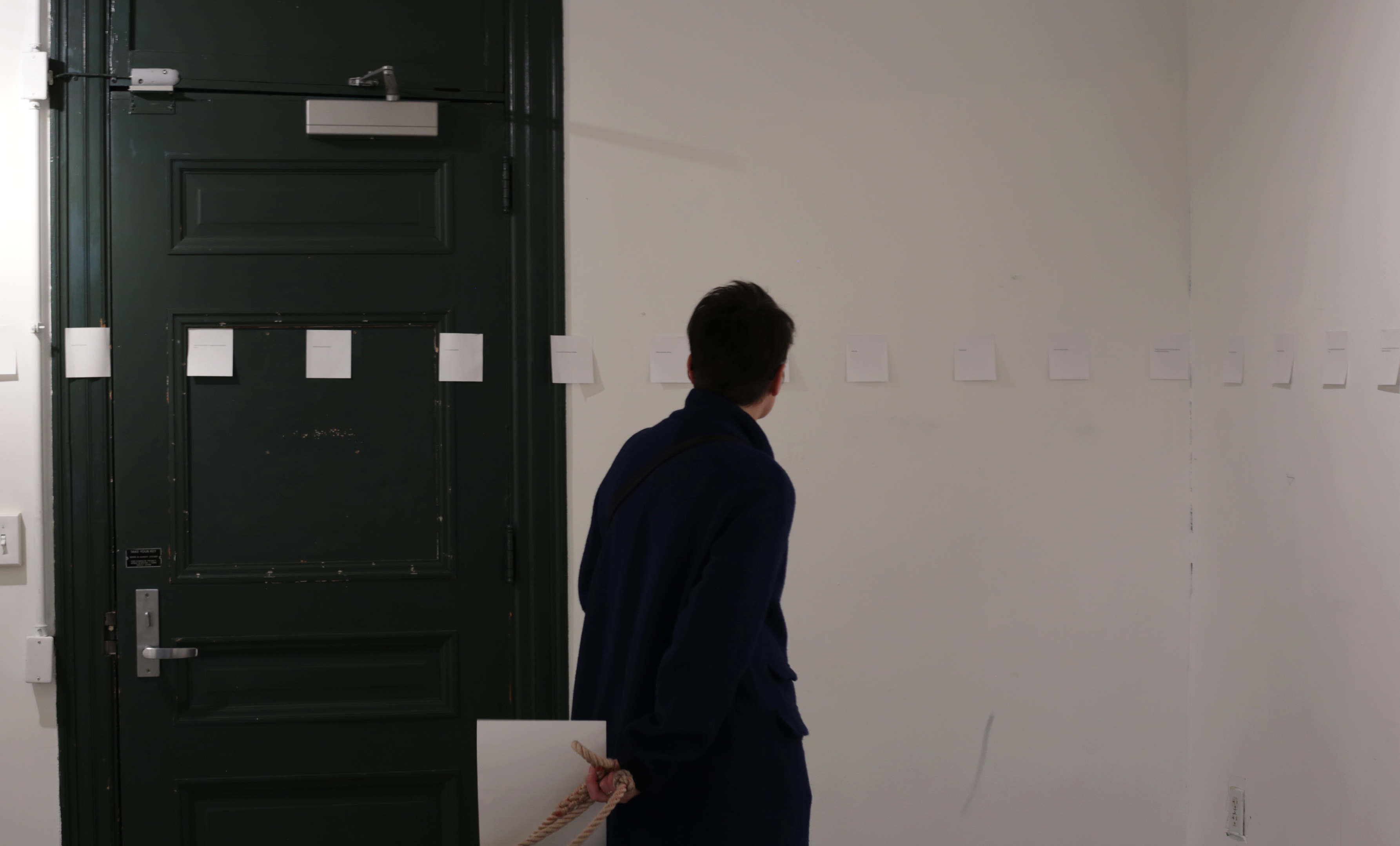Still There
2022Digital print on paper
OpenAI Dall E 2 (Outpainting)
Still There is a site-specific installation combining poetry and artist-AI conversational imagery. Each image frame is generated based on the part of the previous image by the prompt I fed to Dall E. Every prompt is a line of a poem that depicts a nostalgic place in my memory. The place is now under construction, and its topography only exists in the former residents’ memories.
What does it mean to make an effort to AI-translate a placeless place whose ontology must be grounded in someone’s private memory? Is it a funeral for the place? Or is it just a nonsense demonstration of technology? This translation effort is destined to end up in mistranslation. The image fails to carry the memory’s specificity and the poetry’s sentiment and intentional ambiguity, since the algorithm has a tendency toward abstraction because of the database’s biased perspectives. Thus, the disconnection asks, “Where is this place, and whose memory is this now?” Can I claim it for my own? Is it the viewer’s? Because, after all, the memory is destined to be contextualized within the viewership. Or, it could be both no one’s and everyone’s, because both no one and everyone has unintentionally or intentionally contributed to the vast amount of database that AI has been trained by. Keeping in mind that memory has a dual meaning in human and computer memory, questioning the ownership of the memory is questioning the ownership of the database and the accessibility of the AI technology.
Despite its fame and ubiquity, AI has always been mystified by the technology industries. Even in the case of open-source AI image-making programs, including Stable Diffusion, Dall E, and Midjourney, their source code research papers, and databases are exclusive to those with no degree or profession in computer programming. It is intentionally illiterating the mass users. The term “AI” itself is misleading. Machine learning is renamed to Artificial Intelligence by the industry’s needs to promote it within the capital, whereas it is neither artificial—the technology is heavily based on human labor and natural resources—nor intelligence—the algorithm only “thinks” within the database they trained from.
Thus, AI does not exist, as the ownership of the database does not exist. Likewise, The memory in Still There does not exist now. So does the place. However, they are still there, constantly asking if they are.
11.26.2022 Sae Oh
What does it mean to make an effort to AI-translate a placeless place whose ontology must be grounded in someone’s private memory? Is it a funeral for the place? Or is it just a nonsense demonstration of technology? This translation effort is destined to end up in mistranslation. The image fails to carry the memory’s specificity and the poetry’s sentiment and intentional ambiguity, since the algorithm has a tendency toward abstraction because of the database’s biased perspectives. Thus, the disconnection asks, “Where is this place, and whose memory is this now?” Can I claim it for my own? Is it the viewer’s? Because, after all, the memory is destined to be contextualized within the viewership. Or, it could be both no one’s and everyone’s, because both no one and everyone has unintentionally or intentionally contributed to the vast amount of database that AI has been trained by. Keeping in mind that memory has a dual meaning in human and computer memory, questioning the ownership of the memory is questioning the ownership of the database and the accessibility of the AI technology.
Despite its fame and ubiquity, AI has always been mystified by the technology industries. Even in the case of open-source AI image-making programs, including Stable Diffusion, Dall E, and Midjourney, their source code research papers, and databases are exclusive to those with no degree or profession in computer programming. It is intentionally illiterating the mass users. The term “AI” itself is misleading. Machine learning is renamed to Artificial Intelligence by the industry’s needs to promote it within the capital, whereas it is neither artificial—the technology is heavily based on human labor and natural resources—nor intelligence—the algorithm only “thinks” within the database they trained from.
Thus, AI does not exist, as the ownership of the database does not exist. Likewise, The memory in Still There does not exist now. So does the place. However, they are still there, constantly asking if they are.
11.26.2022 Sae Oh












